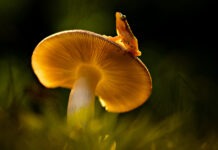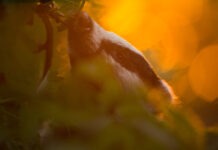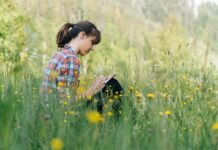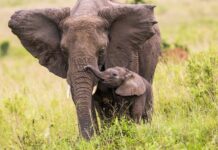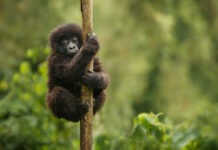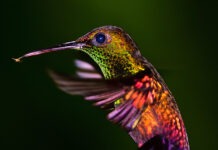Ghost frogs, vampire bats, spindly spiders, mountains of maggots, leaping toads and spooky owls are ingredients in every witch’s favorite recipe. But don’t let the Halloween myths behind these creepy creatures haunt your sleep–these animals are beneficial to humans and the environment.
Frightened by Frogs? Limited to a tiny range in the Drakensberg Mountains of South Africa, ghost frogs (so named because they are rarely seen) seek out a living by hiding under rocks and crevasses. If you run into one, don’t eat it; you might turn into a ghost. The frogs’ skin contains poisons that keep many predators away.
Beware Bloodsucking Bats? Yes, vampire bats do live on a diet exclusively of blood, but they almost always opt for other animals besides humans. Cattle are a frequent target of theirs and they usually only extract a tablespoon or less of blood at a time, making very small cuts.
Vampire bats have three active ingredients in their saliva to keep their prey’s blood flowing:
1. An anticoagulant that keeps the blood from congealing.
2. A chemical that keeps red blood cells from sticking together.
3. One that inhibits the constriction of veins under the wound.
Some of these naturally occurring chemicals are now being used to develop medication for heart and stroke patients.
Terrified by Tarantulas? Despite a Hollywood persona of hairy bodies and deadly fangs, tarantula venom is not poisonous to humans. In fact, if most people knew what tarantulas eat – human pests like mice, crickets, moths and flies – they may change their opinions of them.
Grossed-out over Grubs? The site of maggots churns stomachs because they love to go where few of us dare to stray: dead and rotting meat. But maggots are enormously beneficial to the Earth. They are decomposing machines, breaking down rotting biomass and returning nutrients to the soil. If maggots didn’t do that, who would?
Turned-off by Toads? Incredibly sensitive to habitat changes, toads are excellent indicators of the health of an environment. When foreign chemicals are added to an ecosystem, toads are some of the first animals to suffer. Scientists study them for clues to environmental change.
Toads are also efficient pest controllers and a great alternative to using pesticides in the garden. They eat insects, slugs and snails.
Hoots have you Horrified? Just because owls can rotate their heads 270 degrees and fly silently after dark doesn’t mean they are up to mischief. As nocturnal animals and predators, owls go after many animals humans try to keep under control, like rodents and even large insects.
Want to get involved this Halloween? Adopt a spooky species or Carve a pumpkin to demonstrate your support for WWF
Source: The above story is reprinted (with editorial adaptations by Bare Essentials staff) from materials provided by the World Wildlife Fund.



